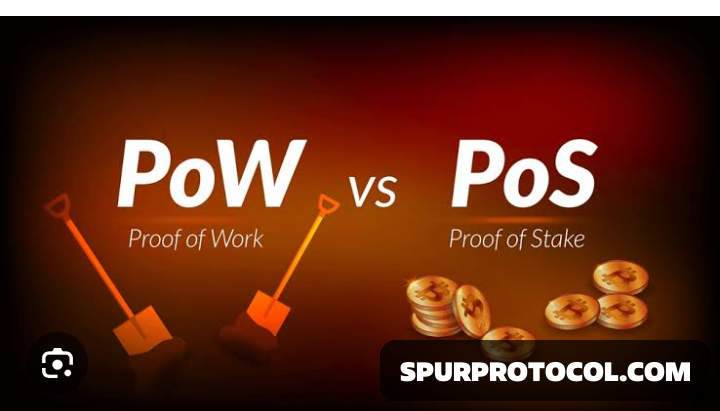1. Definition
Proof of Work (PoW):
PoW is a consensus algorithm where miners compete to solve complex mathematical puzzles to validate transactions and add new blocks to the blockchain. The first miner to solve the puzzle gets the right to add the block and is rewarded with cryptocurrency.
Proof of Stake (PoS):
PoS is a consensus algorithm where validators (stakers) are chosen to create new blocks and validate transactions based on the number of coins they hold and "stake" in the network. The more coins a participant stakes, the higher their chances of being selected.
---
2. Energy Consumption
PoW:
Highly energy-intensive since it requires powerful computational hardware to solve cryptographic puzzles.
Examples: Bitcoin mining consumes vast amounts of electricity.
PoS:
Energy-efficient as it does not require mining operations. Validators are chosen based on stake rather than computational power.
Examples: Ethereum 2.0 transitioned to PoS to reduce energy consumption.
---
3. Security Mechanism
PoW:
Security is maintained by the difficulty of solving cryptographic puzzles and the economic cost of a 51% attack.
An attacker would need to control over 51% of the network’s total computing power, which is highly expensive and impractical.
PoS:
Security is ensured through economic penalties (slashing). If a validator behaves maliciously, their staked coins are confiscated.
A 51% attack would require owning 51% of the total staked coins, which is costly and financially self-destructive.
---
4. Block Creation & Validation Process
PoW:
Miners compete to solve a puzzle. The winner gets the right to add the block and earn block rewards + transaction fees.
This process takes longer and can cause network congestion.
PoS:
Validators are randomly chosen based on the number of coins they stake. Block creation is faster and more efficient.
Transaction finality is quicker compared to PoW.
---
5. Decentralization
PoW:
Initially, it was more decentralized since anyone could mine using a basic CPU. However, the rise of ASIC miners has led to centralization in mining pools.
Large mining farms dominate the network, reducing individual participation.
PoS:
More decentralized since there is no need for expensive mining hardware.
However, wealthier participants with more staked tokens have a higher influence, potentially leading to centralization.
---
6. Incentives & Rewards
PoW:
Miners receive block rewards (newly minted coins) and transaction fees as incentives for solving puzzles.
Rewards decrease over time (e.g., Bitcoin halving events).
PoS:
Validators earn transaction fees and staking rewards for participating in block validation.
No new coins are minted in some PoS models, reducing inflation.
---
7. Scalability
PoW:
Limited scalability due to high computational requirements and longer block times.
Solutions like Layer 2 (e.g., Lightning Network) help improve scalability.
PoS:
More scalable as block validation is faster and requires less energy.
Networks like Solana and Ethereum 2.0 utilize PoS to enhance transaction speed.
---
8. Examples of Cryptocurrencies Using Each Mechanism
PoW:
Bitcoin (BTC)
Litecoin (LTC)
Bitcoin Cash (BCH)
Monero (XMR)
PoS:
Ethereum 2.0 (ETH)
Cardano (ADA)
Solana (SOL)
Polkadot (DOT)
---
9. Environmental Impact
PoW:
High environmental impact due to massive energy consumption and carbon footprint.
Many PoW networks face criticism for being unsustainable.
PoS:
Eco-friendly since it requires minimal computational power and energy.
Preferred for sustainability-focused blockchain projects.
---
10. Resistance to Attacks
PoW:
More resistant to Sybil attacks but vulnerable to 51% attacks (if an entity controls most mining power).
Requires large computational resources to attack.
PoS:
Prevents Sybil attacks by requiring economic investment (stake).
A 51% attack is difficult since attackers would risk losing their staked funds.
---
Summary Table: PoW vs. PoS
---
Final Thoughts
PoW is best for security and decentralization but suffers from high energy consumption and slow transaction processing.
PoS is more energy-efficient, scalable, and environmentally friendly but may lead to wealth-based centralization.
Many modern blockchains, including Ethereum, are moving towards PoS due to its sustainability and efficiency.
